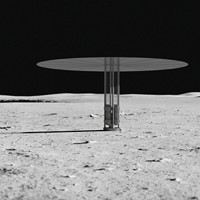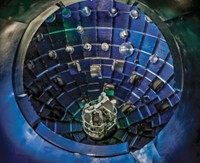Advertisement
Grab your lab coat. Let's get started
Welcome!
Welcome!
Create an account below to get 6 C&EN articles per month, receive newsletters and more - all free.
It seems this is your first time logging in online. Please enter the following information to continue.
As an ACS member you automatically get access to this site. All we need is few more details to create your reading experience.
Not you? Sign in with a different account.
Not you? Sign in with a different account.
ERROR 1
ERROR 1
ERROR 2
ERROR 2
ERROR 2
ERROR 2
ERROR 2
Password and Confirm password must match.
If you have an ACS member number, please enter it here so we can link this account to your membership. (optional)
ERROR 2
ACS values your privacy. By submitting your information, you are gaining access to C&EN and subscribing to our weekly newsletter. We use the information you provide to make your reading experience better, and we will never sell your data to third party members.
Environment
Building a Chemical Laser Weapon
Under fire, Airborne Laser program director confronts challenges of revolutionary weapons system
by WILLIAM G. SCHULZ, C&EN WASHINGTON
December 20, 2004
| A version of this story appeared in
Volume 82, Issue 51
The speed of light, says air Force Col. Ellen M. Pawlikowski, will someday be used to greatly enhance national security. As director of the Missile Defense Agency's (MDA) Airborne Laser (ABL) program, the upbeat and confident chemical engineer leads a scientific team attempting to do just that: Build a Chemical Oxygen-Iodine Laser (COIL) so powerful that, from a Boeing 747 airplane, it will be able to target, heat up, and destroy missiles fired by an aggressor.
If successful, COIL would be the first laser used as a weapon, and by all accounts, it would be revolutionary. Although the Pentagon has developed other chemical lasers, COIL technology appears to offer military planners their best option for producing a high-energy beam.
"The concept has been around awhile," Pawlikowski says. "But it really formulated itself into being the ABL at the end of Operation Desert Storm in 1991, when we recognized the value of being able to intercept [Scud] missiles. The idea was formed that if you could use the speed of light to do this, then you would be able to get power to a target from a distance."
In mid-November, there was a "first-light" test of COIL on the ground at Edwards Air Force Base, in California. The six-module laser was turned on for less than a second, during which time it produced photons and heated up a small piece of copper. The laser then shut itself down because of "abnormal readings on optical sensors," says Steven E. Lamberson, ABL chief scientist.
Lamberson and other ABL officials give limited information about the test. Many details are classified, along with other technical information about COIL. Lamberson, however, says the shutdown proves that COIL works as designed--that it is meant to shut down if the system begins to detect overheating or damage to the optics.
Others disagree with that assessment, and they view ABL and COIL with tremendous skepticism.
"They have no direct measurement of beam output or beam quality," says Philip E. Coyle, senior adviser at the nonprofit Center for Defense Information, a defense policy think tank, and a former assistant secretary of defense for test and evaluation (1994–2001). "And they still have a problem with the optical coatings standing up to the laser, so they don't dare fire it at full power or for more than a fraction of a second."
After the first-light test, Pawlikowski suggested during a news conference that the laser fuel might be modified from basic hydrogen peroxide to deuterated hydrogen peroxide, in order to squeeze greater efficiency from the reaction.
The high-energy COIL is driven by a reaction of hydrogen peroxide to produce excited oxygen that in turn excites iodine. The resulting laser beam is designed to cause a structural failure, destroying the missile before it can release its warhead.
The COIL beam wavelength--1.315 µm--"is at the edge of the window in terms of what is needed to propagate through the atmosphere," says chemist Kip Kenrick, who works on COIL technology for the Air Force Research Laboratories at Kirtland Air Force Base, in Albuquerque, N.M.
CHANGING THE FUEL mixture to achieve greater efficiency could have unintended consequences, Coyle says. "Whenever you change to a new laser fuel, there are inevitable surprises. The chemistry of the laser materials has been one of the things that has dogged [ABL] in this program, and when [ABL] changes the chemistry, if they do, it will present new issues. All in all, it sounds like this program is going back to the drawing board."
In fact, the program has met with harsh criticism from Congress and the Pentagon for cost overruns and inability to surmount technical challenges.
The technical hurdles are and have been significant. The ABL team has had to design a laser that will not destroy its own optics; the laser needs to be light enough to fly in the back of a 747; jittering and shaking from the aircraft could distort and misdirect the COIL beam; and some defense experts question the practicality of maintaining a small chemical plant to make the laser fuel wherever ABL might operate.
The American Physical Society (APS) released a critical study of boost-phase ballistic missile defense--the military niche for the ABL program--in October. Several findings by that panel question ABL's true ability and practicality.
"Assuming that [ABL] works as planned, its useful range would be about 600 km against a typical liquid-propellant ICBM (Intercontinental Ballistic Missile)," the APS report says. "This range would be sufficient to defend the U.S. against such ICBMs launched from North Korea but insufficient to defend against such missiles launched from Iran. Because solid-propellant ICBMs are more heat resistant, the ABL's ground range against them would be only about 300 km, too short to defend against solid-propellant ICBMs from either Iran or North Korea.
"Countermeasures against ABL," the report continues, "could include applying ablative coatings or rotating the ICBM to reduce the amount of heat the missile absorbs, launching multiple missiles to overwhelm the ABL's capabilities, or attacking the aircraft carrying the laser."
But the many logistic and technical challenges do not deter Pawlikowski or lessen her enthusiasm.

"No one has ever attempted to build a laser of this power--a chemical laser," she says. A ground-based laser that the Navy is developing comes close, "but no one's ever built a chemical laser of this power. And certainly no one's ever put a laser weapon on a plane."
Pawlikowski says that roughly 1,300 people from the military and three civilian contractors--Lockheed-Martin, Boeing, and Northrup Grumman Space Technology--are hard at work on ABL.
The ABL program was launched in 1996 with an R&D contract for prime contractor Boeing and a cost ceiling of about $2.5 billion. Pawlikowski joined the ABL program in 2000. At that time, the system was scheduled to become operational by September 2006, a timetable that has now been abandoned.
The entire ABL system consists of the following components: a Boeing 747 aircraft; a high-energy COIL; a beam-control and fire-control system designed to track and stabilize the COIL beam; and a battle management and command-and-control system to select and manage ABL "engagements."
THE LASER ITSELF was to consist of 14 modules, but ABL today is talked about only in terms of a six-module laser. Pawlikowski doesn't attach much significance to the original number. She says it was a starting point when ABL was created in the mid-1990s and that today's laser modules are more efficient.
But Coyle says, "I think it is very significant that they have given up on getting 14 laser modules into the aircraft and have given up trying to achieve the desired power out of a 14-module system."
Pawlikowski says: "MDA looks at us in the context of the rest of ballistic missile defense, and they consciously--on an annual basis--make an assessment of the value of ABL. Can it provide a missile defense capability for the U.S.? And the answer to that is 'yes.' "
"The way ABL will operate," she continues, "is we fly above the cloud deck--normally about 40,000 feet--in a 747. When a missile is launched and breaks that cloud deck, a battle management system with an infrared sensor detects the plume on the bottom of the missile. ABL then turns that over to the beam-control system. The beam-control system uses a smaller solid-state laser to track the missile, and it points the high-energy [chemical oxygen-iodine] laser and conditions the beam onto the target."
Before the first-light test took place on Nov. 11, Pawlikowski noted: "Our only objective in this first test is to create photons. I am not worried how many of them I create. The whole run itself will probably be less than half a minute."
And whatever the outcome, she said, "I don't believe that it will be looked at as a failure, because I believe there is a pathfinder role in terms of directed energy. There will be a lasting contribution--on top of when we do shoot that missile down and demonstrate the capability."
But with more than $2 billion spent on ABL already, according to a Government Accountability Office (formerly the General Accounting Office) report released in May, everyone agrees that it is a long way from operational. In fact, GAO recommended scrapping an ABL timetable with the endpoint of shooting down a missile in favor of a "points-of-knowledge" approach.
"What they suggested was to take a look at pacing" ABL, Pawlikowski says. What's more, she says the ABL team agrees with that assessment and has adopted the concept.
Asked if she nonetheless has a timetable for ABL in her own mind, Pawlikowski, replies, "My objective is--if we accomplish first light by the end of this year, we will spend the rest of 2005 going from first light to proving out this laser to full-power and longer duration firings.
"I will not answer your question as to when do I think we will put the laser into the airplane and shoot down a missile until I am at the end of that full-power, full-lase testing. I am going to take this one step at a time and not get ahead of my headlights."





Join the conversation
Contact the reporter
Submit a Letter to the Editor for publication
Engage with us on Twitter